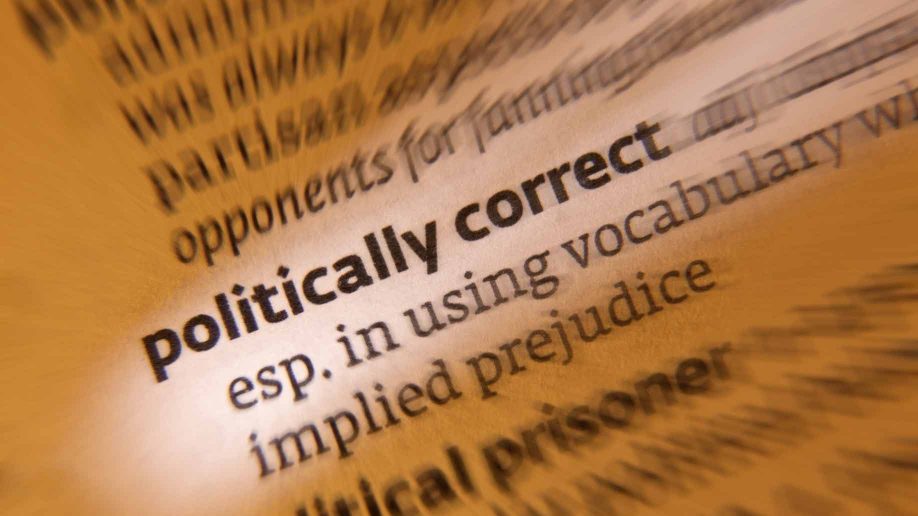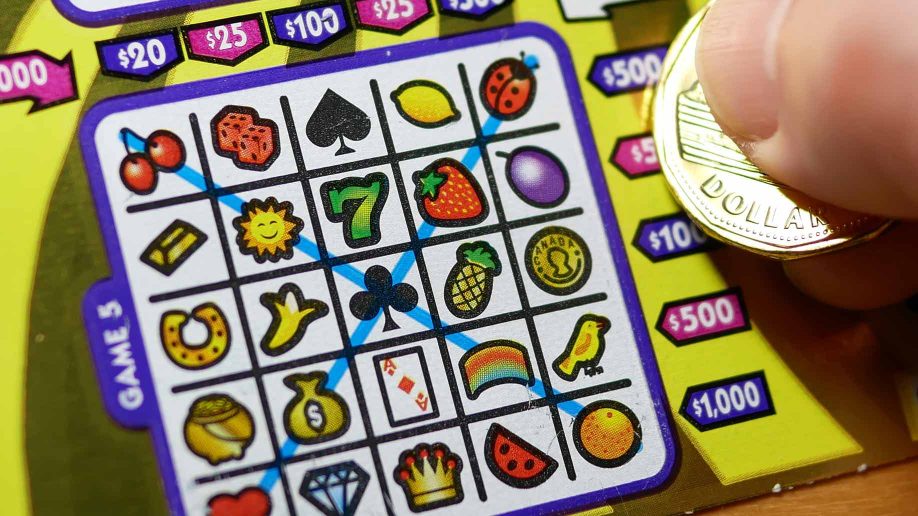
“Sticks and stones may break my bones, but words will never hurt me.” This old English rhyme is often heard during one’s childhood, typically as comfort to a victim of ridicule by other children. Implicit in the advice is the unspoken admonition to the child to grow up and ignore the pain of verbal abuse – after all, it’s only words.
Many believe that the avoidance of words that may offend, marginalize, or insult a group of people – political correctness (PC) – has gone too far. According to PC critics, PC promotes a society of victimhood and endangers the public at large by limiting discussion about controversial subjects. Chris Cox, the executive director of the NRA Institute for Legislative Action, wrote in a USA Today op-ed about the Orlando mass shootings that the “administration’s political correctness prevented anything from being done about it.”
Conservatives claim that PC is a threat to the first amendment and our right to free speech. Columnists liken modern-day America to Ray Bradbury’s “Fahrenheit 451” or George Orwell’s future society in “1984“. In “1984”, Big Brother’s thought police relentlessly pursue anyone foolish enough to say anything that might be offensive to someone. Surprisingly, liberals – often blamed for the expansion of PC – have their own misgivings about verbal censorship. Ralph Nader, a former third-party candidate for president, says, “You can’t say this about that, and you can’t say that about this. And the employer tells you to hush. And perhaps your wife tells you to hush, and your kids tell you to hush. It’s gotten absurd.”
Does one’s choice of words matter? Have efforts to avoid offense stifled free speech as many claim? Is political correctness an expression of politeness, evasion of hard truths, or extreme sensitivity? Or is an expression of anti-PC sentiment simply incivility, indecency, or vulgarity, as Mark Hanna writes in TIME?
Read more . . .
Should Euthanasia Be Legal?

H
Harold and Patricia Tucker recently passed their 50th anniversary. There was no celebration.
Married a month after their high school graduation, Patricia worked as a secretary in a local law firm to help Harold attend law school. Harold went on to climb the corporate ladder, becoming the chief counsel of a major insurance company by age 44. Unable to get pregnant, they adopted two children: John and Elizabeth.
Disaster stuck when Harold was 58. After experiencing memory problems, speaking difficulties, and bouts of physical pain, doctors suggested a series of tests, culminating in a biopsy of the brain. He was diagnosed with Pick’s disease.
There is no known cure for Pick’s disease, which attacks the frontal and temporal lobes of the brain. The symptoms include dementia, memory loss, and loss of motor control, typically leading to death within eight to ten years. Patients often spend their final days in an assisted living facility.
Pick’s disease intensified Harold’s constant pain. Relief only came from heavy drug usage and semi-consciousness.
The Dilemma of a Fatal Disease
Terminal conditions are devastating. Life turns upside down – even the values held for a lifetime can be questioned. Psychologists claim that no one copes with impending death in the same manner, although many go through a variation of Elizabeth Kübler-Ross’s five stages of grief: denial, anger, bargaining, depression, and acceptance.
As Harold’s symptoms increased, he was forced to resign from his job, relying on Patricia for his day-to-day care. Every movement sent spasms of pain through his body, necessitating a daily regiment of opioid pills and patches. The side effects of the medication were almost as bad as the pain itself, with bouts of severe constipation, stomach aches, and drowsiness. The need for Patricia to handle his most intimate hygiene needs confirmed his helplessness.
Rather than spend his last days in pain, using up the savings intended for his wife and family, Harold determined that his life would end on his terms – not at the whim of some disease.
What actions would you take if diagnosed with a fatal, debilitating disease such as amyotrophic lateral sclerosis (ALS) or Alzheimer’s disease? Many believe that they would prefer to die on their terms, rather than endure the ravages of disease. Others accept continued life, despite the emotional and financial costs for their survivors.
Few realize that they do not have a choice if the situation arises, especially if they live in 45 of the 50 United States or the District of Columbia, where assisted suicide is illegal. In the five remaining right-to-die states – California, Montana, Oregon, Vermont, and Washington – the right to control the circumstances of your death is strictly controlled.
Read more . . .
1 Way to Fix the U.S. Federal Debt No One is Talking About
Read more . . .
Public lotteries have a long history. From Caesar Augustus (where tickets had prizes of slaves, real estate, and ships) to European governments during the Middle Ages (which relied heavily on lotteries for revenue), state-run lotteries have continually proven lucrative, according to the Encyclopedia Britannica.
Not surprisingly, the United States of America also has a long history of lotteries. Considered “voluntary taxes,” early lotteries were used to fund new colleges such as Harvard, Dartmouth, Yale, and Brown. In 1745, the General Court of Massachusetts passed an act allowing a lottery to pay off costs defending the colony’s frontier and seacoasts. By 1831, eight states held 420 lotteries.
Today, lotteries are the most popular form of gambling in the United States, with two times as many annual participants as those who visit a casino. A Gallup Research Poll indicates that nearly 50% of Americans buy state lottery tickets each year. The majority of participants have a technical, college or post-graduate degree, earning more than $36,000 a year.
The popularity of gambling has also been global, with numerous governments taking a cut. One of the longest-running lotteries was the Irish Sweepstakes from 1930 to 1987, the revenues of which benefited Ireland’s public hospitals. A state-run lottery managed by the country’s postal system replaced the Sweepstakes, providing more than £30 million for government-sponsored projects each week. According to the United Kingdom’s official National Lottery website, more than £1,901 million ($2.37 billion in U.S. dollars) has funded 500,000 projects since its origination in 1994.
According to the North American Association of State and Provincial Lotteries (NAASPL), more than $110 billion of lottery tickets were sold in the United States in 2015. Roughly $33 billion of that was redirected to state and local governments. According to figures compiled by the U.S. Treasury Department, that represents approximately one-tenth of the Federal Government’s annual revenues from corporate taxes ($344 billion) and slightly more than 2% of the $1.5 trillion received from individual income taxes.
With huge participation rates and billions in revenue, redirecting lottery funds can make a significant impact. As the national debt continues to rise, many have called for a national lottery, with proceeds spent paying down debt.
Is it time to offer a national lottery in the United States to retire the National Debt?
The Growing National Debt
According to the Federal Reserve Bank of St. Louis, the total U.S. national debt will be $20 trillion by the end of 2016, a 347% increase since 2000. Many economists consider only the debt held by the public in their calculations, discounting the effect of intra-government holdings (an estimated $5.5 trillion at the end of the year). The majority of the intra-governmental holdings are in the Medicare and Social Security Trust Funds, as well as the Federal Financing Bank securities.
Read more . . .
Understanding Tax Benefits of Real Estate Investment Properities
 Renting versus buying can be a difficult choice. Still, according to The Wall Street Journal, almost two-thirds of American households own homes. Many more own rental properties or second vacation homes. By contrast, a Gallup Poll found that only one-half of Americans own stocks.
Renting versus buying can be a difficult choice. Still, according to The Wall Street Journal, almost two-thirds of American households own homes. Many more own rental properties or second vacation homes. By contrast, a Gallup Poll found that only one-half of Americans own stocks.
Home equity is the foundation of personal wealth in the United States, representing about two-thirds of net worth for most American households, per Bloomberg. The expansion of home ownership has been stimulated by government programs and tax advantages to incentivize the purchase of houses. According to a study in Social Forces, home ownership leads to “a stronger economy, better schools, and an invested, proactive citizenry.” Homeowners have higher voting rates and are more involved in civic organizations.
Owning real estate has some unique financial advantages. For example, homeowners can deduct their mortgage interest, mortgage insurance premiums, and property taxes from ordinary income. Also, proceeds from the sale of a house are treated as capital gains for taxes – up to $250,000 of the gain can be excluded from income for a single taxpayer or $500,000 for a couple filing a joint return.
Owning a home or investment real estate offers huge advantages to both society and you individually. Here’s how to get the most out of your investment.
Real Estate as an Investment
Owning an investment property is significantly different than owning the property in which one lives. While investors share many common risks – illiquidity, lack of transparency, political and economic uncertainty – each investment property is unique, varying by use, location, improvement, and permanence. Each investment can be subject to a bewildering collection of tax rules, all of which affect the net return on investment.
Andy Heller, co-author of “Buy Even Lower: The Regular People’s Guide to Real Estate Riches,” notes that most people pay too much for their properties: “The profit is locked in immediately once the investor buys the property. Due to mistakes in analysis, the investor pays too much and then is surprised when he doesn’t make any money.”
Heller advises that success in real estate investing requires:
Read more . . .

